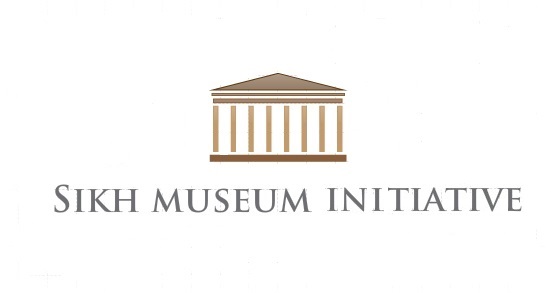
Tomb of Akali Phula Singh
Bobby Singh Bansal on the solid legacy left by the Sikhs in north-western Pakistan: fortifications.
Not much is known on Pakhtunkhwa’s Sikh heritage and my research sheds some light on the undiscovered structures that were built by the charismatic Sikh officer General Hari Singh Nalwa, a staunch commander of Maharaja Ranjit Singh of Lahore during the 19th century. The region came under the administration of the mighty Lahore Durbar and Ranjit Singh was probably the first Punjabi to control the volatile area of the Pakhtuns: something the Russians or Americans could not achieve in the 20th century. Under the leadership of the fanatical Nihang chief Akali Phula Singh, the Sikh army crossed the Indus River with over 8000 troops in 1823, where a pitched hand-to-hand battle was fought between the belligerent forces. The powerful forces of Azim Khan Barakzai of Afghanistan were no match for the ferocious Nihangs. Azim Khan had been defeated and although the town of Naushera was firmly under the control of Ranjit Singh, he despaired the loss of Phula Singh in the fierce battle. Today the crumbling tomb of Akali Phula Singh, which was raised by the Maharaja himself, stands desolate and neglected, adjacent to a building that was used as barracks by Phula Singh – both are in ruins today. To strengthen the Sikh rule in the area, several forts were built between Naushera and Attock. These satellite posts were known as Jahangira, Akora Khattak and Khairabad. Sadly all have since disappeared.
The Shab Qadar Fort

Tomb of Hari Singh Nalwa
Forts built by the Sikh empire are still in the use of Pakistani defence forces
When Maharaja Ranjit Singh envisaged expanding his territory westwards, he solely relied on his loyal military commander General Hari Singh Nalwa to accomplish the mission of annexing the Peshawar valley to the dominions of the Sikh Empire. In 1834, when the Sikhs finally seized Peshawar from the Afghans, they did more than merely occupying the city: Hari Singh Nalwa had cordoned off Peshawar with a series of mud forts erected vertically – but parallel – along the porous Afghan border. These satellite posts were meant to combat the Mohmands, Yusufzais, Khattaks, Adamkhels and Afridi tribes from a military perspective to fortify and ensure the security of Peshawar. General Hari Singh Nalwa had reconstructed the crumbling Bala Hisar Fort, which was later renamed Sameergarh Fort. Today, with the construction of new buildings all over, the space between the old city and the fort has considerably narrowed. Despite this, the fort’s position on a high mound gives a commanding and panoramic view of Peshawar. While entering the main courtyard of the fort one notices a marble inscription, above the arched gate – perhaps the only surviving Sikh inscription, associated with the particular Sikh period. It reads:
“VICTORY TO PORAKH. THROUGH THE GRACE OF SRI AKAL UNDER THE LIBERAL GOVERNMENT OF MAHARAJA RANJEET SINGH BAHUDUR OVER THE REGION OF PESHAWAR, IN THE YEAR 1891 (VIKRAM SAMRAT) (A.D.1834) THIS WAS BUILT BY RAJA BIKRAMAJIT AND NAMED SAMEER GARH”
Exterior walls of the Bara Fort
Although these forts are less known compared with the indelible Jamrud Fort, where Hari Singh Nalwa was cremated in 1837, yet they had served their purpose since their inception as they are still being used by the Pakistan Army and troops of the Royal Constabulary Force. Of these the northernmost is Michni Fort, followed by Shab Qadar Fort, Jamrud Fort, Kishangarh Fort (now known as Mackeson Fort) and finally Bara Fort, which lies about ten miles southwest of Peshawar. However, the satellite forts of Bara Fort, Michni Fort and Shab Qadar Fort were built by Nalwa but completed only after his death by his successors serving in the region from 1837 to 1849. Further south, at Bannu is the majestic fort built by the Sikhs in 1847, just before the British annexation of the Sikh Empire. It had the unique distinction of being the largest of all the Sikh forts built in the area and was known as ‘Dhulipgarh Fort’ after Maharaja Duleep Singh, the last Sikh sovereign of the Punjab. The Anglo-Indian mercenary Colonel John Holmes and Malik Fateh Khan Tiwana were both murdered here for their treasonous behaviour, by the Sikh army in 1848. The town was later established by that ‘Hero of Multan’, Major-General Sir Herbert Benjamin Edwardes, the English administrator cum soldier, who was active in the Punjab. After his death in 1868, Bannu was renamed Edwardesabad, in his honour. It was only after the Partition in 1947 that Edwardesabad relinquished its name and reverted back to Bannu. Today inside the main courtyard are several marble and bronze plated inscriptions of historical importance pertaining to the British period but sadly, nothing from the Sikh period exists.

Inscription at the Bala Hisar Fort
Hari Singh Nalwa built a series of mud forts along the porous Afghan border
This region is rich in Sikh heritage and sites associated with Maharaja Ranjit Singh still stand despite their overall pathetic condition. These sites have the potential to bring in huge number of tourists. Sikh pilgrims in their thousands flock to the historical shrine of Panja Sahib at Hasan Abdal, yet the Peshawar valley is a mere two hours away, about 90% of Sikh heritage sites associated with Maharaja Ranjit Singh are located in this part of Pakistan, giving it great potential to promote culture and tourism that is desperately needed to generate revenue in the region.
Bobby Singh Bansal, a British born Sikh writer, has been working on Sikh heritage since 1989 and has travelled to the remote regions of the Pakistan-Afghanistan border to compile material for his new book Remnants of the Sikh Empire – Historical Sikh Monuments in Pakistan and India
The friday times: 22nd July 2016


